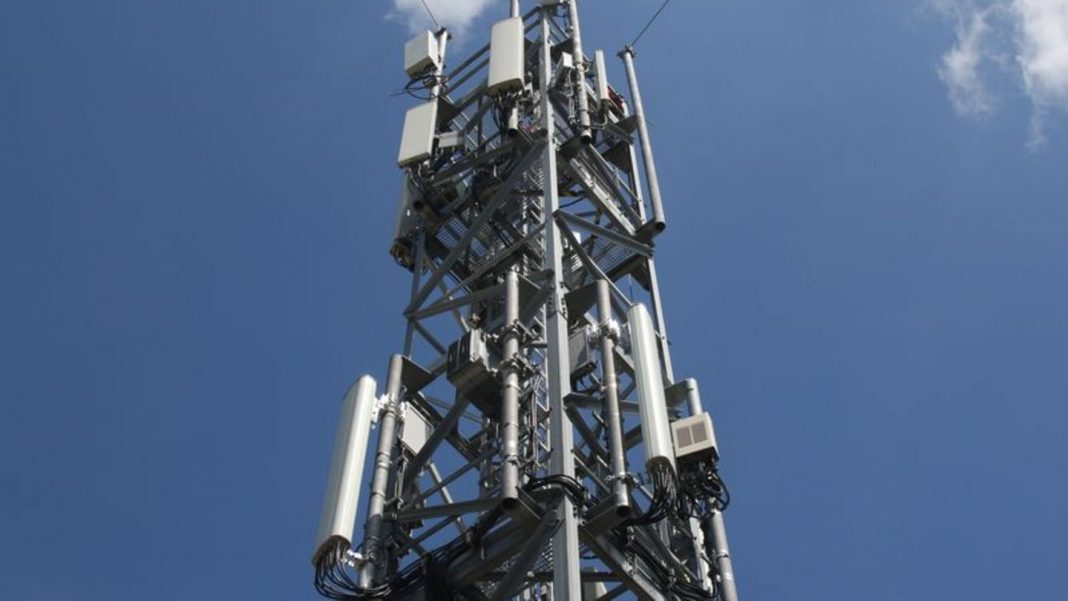Networks in Germany
Vodafone increases 5G-expansion target for 2020 to 50 percent

The 5G Development at Vodafone in Germany is progressing very well. Photo: Christoph Dernbach/dpa
© dpa-infocom GmbH
The 5G-networks in Germany are becoming more densely connected. In addition to Deutsche Telekom, particularly Vodafone mass 5G switches-masts online. In the area of each 5G-Smartphone is not supported but the used frequency combinations.
The 5G Development at Vodafone in Germany is progressing better than planned. “Our technicians build 5G even faster – in spite of the Corona-crisis,” said Vodafone chief technology officer Gerhard Mack of the German press Agency.
The Telecom competitor had made originally to be the end of the year with 3000 5G antennas for 10 million people live. “This is the first expansion target, we have already got now,” said Mack. By the end of 2020 it will reach 15 million people with the 5G, in the next year, then 30 million.
The fifth Generation of mobile communications (5G) provides considerably higher speeds than the previous standard UMTS (3G) and LTE (4G). However, the Top speed is depending on the used frequency ranges are different. In Germany, Vodafone is focusing on the most sites – especially in cities – on the 5G frequencies from the so-called Mid-Band (1.8 GHz). In this range of speeds up to 500 megabits per second can be achieved. At particularly highly frequented locations Vodafone operates in the upper range (3.5 GHz) with double speed.
In the area of the country where the Provider is in the so-called Low-Band (700 MHz) function, you can achieve up to 200 megabits per second. “Here it comes, bring stable networks in places where previously with a snail’s pace has been surfed,” said Mack. In areas where there is, as yet, only slow DSL with two or six megabits per second, take 5G is still a boost.
In some situations, the customers will benefit only indirectly from the 5G networks, which in some Places is still the technology with the infrastructure for LTE share. During the Download, when it comes to high speeds, take 5G in many places already bandwidths of more than one Gigabit per second, – said Mack. In the other direction, so during the Upload, access the 5G network is still in some places on the LTE frequencies. All the 5G-Smartphones not supported all conceivable 5G-4G-combinations.
“Technically, the introduction of a new generation of mobile communications is extremely challenging, because the different new 5G Smartphones will also need to learn how to deal with different frequency combinations,” said Mack. Frequency combinations in the High – and mid-band would be supported by almost all of the 5G mobile phones. On Land, this is not necessarily the case. Here are the 5G-frequency combination in the low band of one of Vodafone offered mobile Router (“GigaCube 5G is supported”), as well as some 5G phones like the Oppo Find X2 Pro or the Huawei Mate40 Pro. The new iPhone-12-models from Apple, the Galaxy devices of Samsung, or the Pixel-Smartphones from Google sparks, however, at this particular frequency combination is not in the 5G network, but use of the expanded capacity in the LTE network.
Consumers who want to surf the 5G network, need to have a 5G-capable device also has a contract that allows you to spark in the 5G network. A powerful 5G-enabled contract, according to the comparison portal Check24 from 20 EUR average price per month. At the auction, the 5G frequencies that were come to one of the three incumbent Provider Deutsche Telekom, Vodafone and Telefónica (O2) to the course. They already offer even 5G networks. Beginners 1&1 Drill, however, wait with the Expansion yet.


